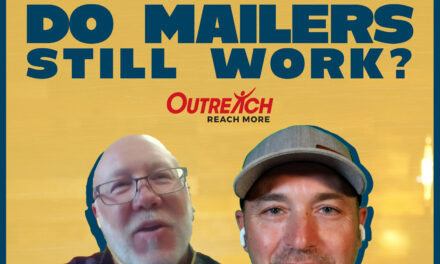In this episode of 101 Questions Church Planters Ask, host Danny Parmelee explains why email marketing is still essential for your church communication strategy, and walks through some practical advice for how to take advantage of email marketing for your church plant.
Here are the big topics discussed in this episode:
Email is not dead.
As annoying as you may consider emails to be, they are still an essential daily function of most everyone’s lives, and the best way to keep in contact with the majority of your community. Consider the email addresses you collect like flecks of gold: they are a small but highly valuable piece of information on the people in your community that you can use to connect with them in the future. When you add all these flecks of gold together (your email strategy) you will have a valuable tool to reach many people for Christ. You cannot rely on social media, text messaging, or smart phone apps. Should you still be using those? YES of course, but email will still be your foundation of communication, especially as you grow and have multiple audiences that you are reaching with different messages.
Use your web domain for your email address as soon as possible.
Having your email connected to your church plant’s website instead of Gmail.com, Yahoo.com, etc. adds the appearance of legitimacy and establishes professionalism. Also, this allows people to copy and paste your website domain from your email address into their web browser and access your website once it’s set up.
Use an email marketing service.
There are all kinds of email marketing websites, even sites connected to church data management software. As soon as possible, start using a service (we suggest mailchimp because it’s free up to 2,000 contacts). Using an email marketing service helps to manage and organize your contacts while sending a well-designed email. Yes, you still send personal emails to people using your standard email but this is key as you grow the amount of people you reach.
Group and sort your audiences.
It’s best to gather your email addresses and contact information according to the function and role of the individual. Here are a few examples of ways to group and sort your audiences:
- Prayer Team
- Financial Supporters
- Launch Team
- General Interest
This also helps you to capture the attention of those who aren’t interested in being involved until the official launch of your church plant. As you grow as a church, people can pick and choose which category of emails they’re interested in receiving– or even opt out of receiving emails.
Discover your own frequency and rhythm for sending emails.
The context of your church plant determines your frequency and rhythm– and determining this comes with time, as well as trial-and-error. Monthly updates to financial supporters, weekly emails to your church plant’s launch team, and other email types are valuable rhythms to start with, and adjust as needed. Emails sent too frequently are often ignored, whereas emails sent too sparingly give time for contacts to lose interest.
One of the best ways to start is Reflect on your own email usage habits! Think through what you open and what you don’t? Which emails do you read and why? What organization or company do you like reciving emails from and WHY. Don’t make the mistake of thinking that your information is so amazing that people are going to read it no matter what. Maybe your mom or grandma will because they care about every word you say but they are probably not the best representation of your common recipient.
Subject lines matter.
For great examples of email subject lines, check out Bridges in Nashville and subscribe on their website’s email newsletter submission form. Pastor Kurtis Parks sends some great email newsletter subject lines.
The truth is, it doesn’t matter how incredible your email is if no one is interested enough to open it. You don’t want click-bait that misrepresents what your email is about, or titles that express every single email contains essential information: but you do want to attract interest and make readers curious enough to click on the email.
Use more pictures and less words.
You only have a few seconds of your reader’s attention once they open your email. Don’t show big blocks of words at the top or make your email painfully long to read: readers will click away if they’re overwhelmed with too much information at once. I recommend a billboard-style approach: blocks of photos with just a bit of essential info that links to further details on your website or elsewhere. Putting the details on your website instead of the body of the email also helps drive clicks to your site, which helps put you higher up in search engine results. If you don’t know what billboard-style is think of opening and email and seeing 5 photos on the left side of the screen and the titles and excerpts on the right.
Pay attention to your analytics.
A day or two after sending an email, check open rates (even see exactly who opened it), link click analytics, and anything else you can see from your email marketing service’s data. Take note of where people are clicking for more details to gauge interest in what you’re promoting and sharing. The average open rate for non-profit email newsletters is 15-20%, so manage your expectations and use your data to help increase your effectiveness for future newsletters. I can’t emphasize this enough, reviewing your analtics is to make you better at communicating and having a pulse on your community. Its not about your ego for opens and clicks. Use your analytics to discover what God is doing in your people and how you can communicate better with them.
Drive people to your other channels.
Create a path in every email to not only your website, but also to your social media channels and contact information. You’ll never be able to reach every person through one channel, but giving individuals opportunities to connect on their favorite platforms will help everyone stay informed and connected to your church plant in the way they prefer. As a general marketing and communication principal you want to create synergy by having your emails drive people to your website and social platforms, you want your social platforms to drive people to your website so you can get their email address, and you want your website to drive them to your church services, small groups, missional communities.
Each one of these feeds the other, and creates momentum and multiple channels of communication and ultimately connection. That is what your ultimate goal is connection and relationship, not just open rates and followers. But open rates and followers are often the path to that connection.
Have a question about church planting? Tell us here.






